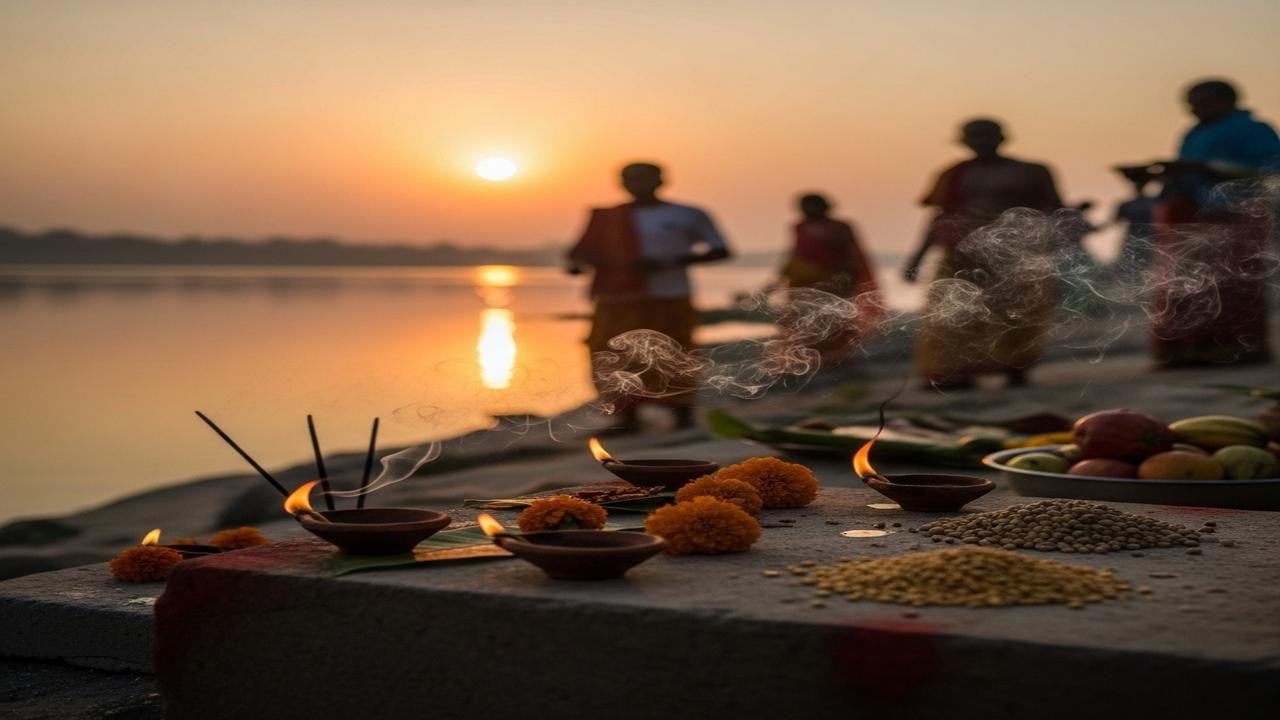Pitru Paksha 15 Days Of Ancestor Rites And Mahalaya Amavasya

What Pitru Paksha is and when it happens
Pitru Paksha (literally, the fortnight of the ancestors) is a 15‑day period in the Hindu lunar calendar dedicated to remembering and making ritual offerings to one’s forebears. It falls during the waning moon (Krishna Paksha) of the lunar month usually called Bhadrapada in many calendars and concludes on Mahalaya Amavasya (also called Sarva Pitru Amavasya). In the civil calendar this typically occurs in September–October; the exact dates vary from year to year because the observance follows tithis (lunar days).
What the rituals are — a short glossary
- Pitṛ — ancestor; forebear.
- Shraddha — an act of faith and offering performed on behalf of the ancestors; can refer to specific rites or the attitude of reverence itself.
- Tarpan — libation of water, often mixed with sesame and other items, offered toward the ancestors.
- Pinda‑dāna — offering of rice balls (pindas) that symbolically nourish the departed.
- Mahalaya Amavasya — the concluding new‑moon day when many families perform the main rites.
Core ritual actions
- Tarpan: simple water libations made at a riverbank, a waterbody, or at home directed to the lineage.
- Pinda‑dāna: the preparation and offering of rice balls, often accompanied by mantras and symbolic gestures.
- Feeding: preparing food for brahmanas (priests), the poor, and sometimes animals such as crows (which are traditionally seen as messengers of ancestors).
- Recitation and reading: scriptural passages, names of forebears, or specific śrāddha mantras; in some families, portions of the Garuda Purāṇa or other texts are read.
- Donation and charity: gifts in the form of food, clothes, and money are offered as part of one’s duty (dharma).
Sources and scriptural context
Ritual prescriptions for ancestor rites appear in a range of Smrti and Purāṇa literature. Texts such as the Garuda Purāṇa discuss the afterlife and the consequences of ritual omission; various Dharmashāstras and the Mahābhārata contain rules and stories underscoring filial duty. Different lineages and regional traditions interpret details—who may perform which rite, the precise mantras, and the sequence of actions—so practices vary across Śaiva, Vaiṣṇava, Śākta and Smārta households.
Religious and social significance
Pitru Paksha functions on several levels at once:
- Family continuity: It reaffirms obligations toward previous generations, reminding the living of bonds that extend beyond an individual lifetime.
- Karmic and ethical logic: In many orthodox readings, ancestor rites are seen as helping the departed attain an appropriate afterlife position; they are also a way for the living to discharge duties (dharma) and receive blessings.
- Communal support: Feeding priests and the needy redistributes resources and strengthens local religious networks.
- Cultural memory: Regular ritual remembrance keeps genealogies, family stories, and moral teachings alive across generations.
Differences in practice — a few respectful notes
Not all Hindus perform Pitru Paksha rites in the same way. Some points of variation include:
- Who performs the rites: in many traditions the son performs shraddha for his parents; in others, daughters or other kin may act or priestly specialists are employed.
- Which ancestors receive offerings: immediate ancestors, grandparents, and extended lineage are listed differently in various families.
- How literally the ritual is done: urban families sometimes use symbolic substitutes, community pandits, or digital services; rural practice often remains more elaborate and place‑based (riverbank, cremation ground).
- Sectarian emphasis: Śaiva and Vaiṣṇava households may recite different mantras and invoke distinct deities within the same ancestral framework.
Practical guidance for modern households
For those wondering how to observe Pitru Paksha thoughtfully without specialist training, the following modest steps convey the spirit of the period:
- Choose a day within the fortnight or take part on Mahalaya Amavasya; consult a family priest or calendar for the correct tithi if precision matters.
- Offer a simple tarpan at home or a nearby waterbody; pour water mindfully and recite the names of the ancestors you remember.
- Prepare and share vegetarian food with family, friends, or local charities; feeding others is a central expression of shraddha.
- Consider a charitable act in the name of the departed—donations to a school, a temple kitchen, or a community service project are accepted contemporary forms of pinda‑dāna.
- If you have health concerns, adapt fasting and prolonged standing to your condition; prioritize wellbeing.
Contemporary debates and adaptations
In urban India and the diaspora, Pitru Paksha is dynamically reimagined: ritual specialists offer pooled rites on behalf of many families; technology allows names and offerings to be transmitted remotely; and some people emphasize ethical remembrance—storytelling, recording family history, and socially useful charity—over elaborate ritual detail. Scholars and practitioners debate the theological claims about post‑mortem outcomes, but most communities agree on the moral value of remembrance and responsibility.
Concluding thought
Pitru Paksha is at once personal and communal: a concentrated season for expressing gratitude, ensuring continuity, and re‑anchoring the present in the living memory of kin. Whether performed with strict ritual precision or adapted to modern life by simpler acts of giving and remembrance, the fortnight presses households to consider how the living honor those who came before and what legacy will be left for those who follow.
